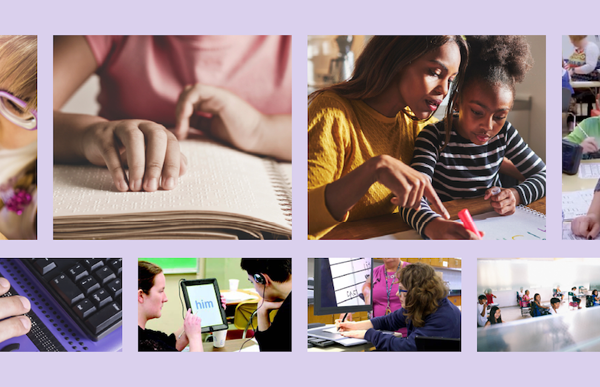Overview

Learn more about learning media assessment, why it matters, the process, and resources to support teachers of students with visual impairments (TVIs), families, administrators, related service providers, and general educators.
Estimated Time to Complete: 1 hour
Learning Objectives:
- Participants will be able to name who benefits from learning media assessments.
- Participants will be able to explain why a learning media assessment is conducted.
- Participants will be able to identify the team members involved in planning and conducting a learning media assessment.
Presenters:
- Sarah Buoni, M.Ed., is the Assistant Director for Diverse Learners with the Ohio Department of Education, Office for Exceptional Children. She has worked in the area of low incidence disabilities for 15 years as both an administrator and an itinerant teacher. Sarah provides technical assistance to families and districts and informs policy and procedures for the education of children who are deaf/hard of hearing, blind/visually impaired, have traumatic brain injuries or have autism spectrum disorder. Sarah participates in statewide meetings including the Interagency Workgroup on Autism, the Ohio Brain Injury Advisory Committee, and the Communicative Competency Taskforce.
- Alison B. LaBarre, Ed.D., is the Assistant Superintendent for the Ohio State School for the Blind (OSSB) and the Ohio School for the Deaf (OSD). She also leads the Statewide Services team who provides assessments and consultation for learners who are blind/visually impaired or deaf/hard of hearing. She has presented at state and national conferences on topics related to middle level education and the educational needs of the exceptional child.
- Danene Fast, Ph.D., is a clinical assistant professor and faculty lead for the Programs in Visual Impairments at The Ohio State University. A dually certified teacher of students with visual impairments and orientation and mobility specialist, she has received both local and national awards for her teaching, including a fellowship with the National Leadership Consortium for Sensory Disabilities (NLCSD). Fast has published and presented at local, national, and international venues, with a research agenda that focuses on accessibility and inclusion.
- Karen E. Koehler, Ph.D., is an assistant professor at Shawnee State University and the project director of the TVI Consortium - a multi-university collaborative for teacher preparation of teachers of students with visual impairments. She has presented at state and national conferences on topics related to STEM education for students with visual impairments and creating collaborative partnerships in educator preparation.
- Christine Croyle, Ed.D., serves as the Program Director of the Outreach Center for Deafness and Blindness at OCALI. She provides leadership to that team as they work to build capacity at the local level for learners who are deaf/hard of hearing or blind/visually impaired. Christine has served as a school administrator for Pickaway County Board of Developmental Disabilities and as a speech language pathologist at The Ohio State School for the Blind (OSSB). She has presented at state, national, and international conferences on topics including leading inclusive models of education, instructional strategies, and designing spaces with accessibility in mind.
Various organizations have approved modules and webinars in the Learning Hub for continuing education credit.